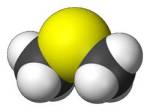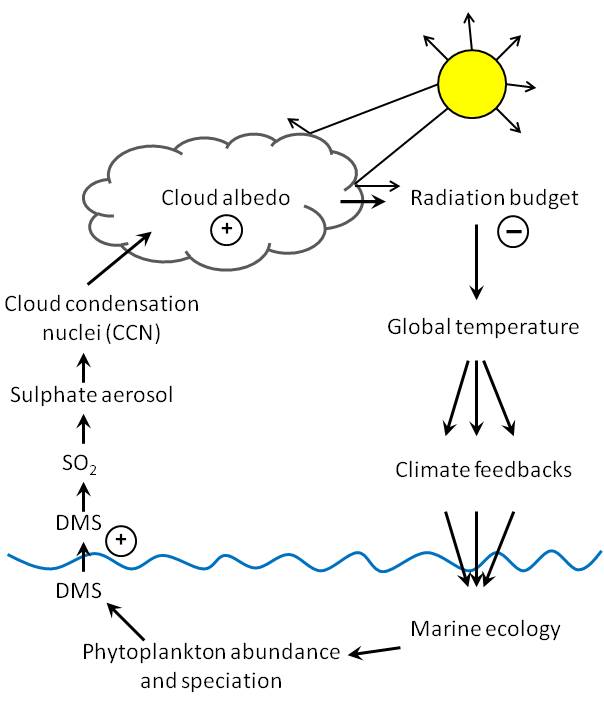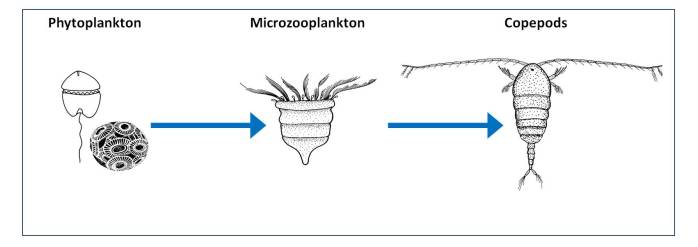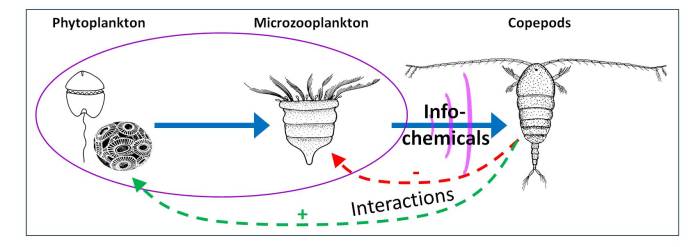My project models the role of dimethylsulphide (DMS) as an infochemical in multitrophic plankton interactions.
“Plankton are microscopic and in the sea!” “Why should we care?” “Do these interactions really affect us (humans)?”
These are all questions that I have been trying to answer and justify whilst writing the first chapter of my thesis, and now that (I think) I have this chapter more-or-less sorted I wanted to break parts of it down into a series of blog posts to get the ideas straight in my head. The first will focus on dimethylsulphide (DMS). What is it and why should we care?
What is dimethylsulphide (DMS)?
Dimethylsulphide (DMS) is a volatile compound made up of two methyl groups (one carbon and three hydrogen atoms) connected by a sulphur atom. DMS is produced following the breakdown of dimethylsulphoniopropionate (DMSP), a metabolite abundant in certain species of algae (phytoplankton) and marine plants. To the average person, DMS is the gas that you can smell when you’re by the seaside, and has been coined the ‘smell of the sea‘.
Why should we care?
DMS has received a lot of research attention since it was hypothesized to affect climate by Charlson, Lovelock, Andreae and Warren (CLAW) over 25 years ago. Marine algae and plants release millions of tonnes of DMS to the surface layers of the ocean, the flux of which forms the main natural form of sulphur in the atmosphere. Once in the atmosphere, DMS oxidises to produce sulphur dioxide which then leads to the production of sulphate aerosols. These aerosols, either directly or by forming cloud condensation nuclei that increase the reflectiveness of clouds, scatter incoming solar radiation back into space, resulting in a decrease of solar irradiance below clouds and a cooling of the planet. The authors of the CLAW hypothesis proposed that this forms a negative feedback mechanism, where the resulting decrease in irradiance reduces photosynthesis in phytoplankton and therefore DMS production. However, the effect of resulting climate feed-backs on further DMS production by algae remains unknown.
The CLAW hypothesis underpins James Lovelocks Gaia theory, which proposes that the material world and all of its inhabitants evolve together as a single self-regulating super-organism with the aim of regulating surface conditions to favour life on Earth.
Both of these hypotheses have received criticism. However, a huge amount of DMS (~28.1 Tg ) is emitted annually from the oceans, making it hugely important for both the chemistry of the atmosphere and cycling of sulphur, as well as for its potential role in climate regulation.


